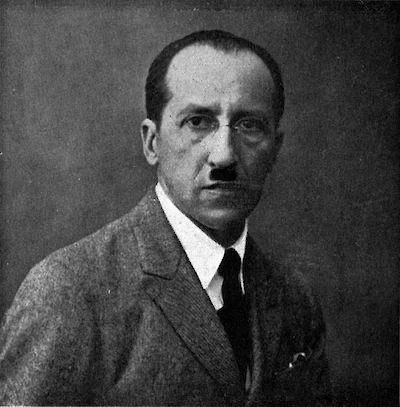

Piet Mondrian
There is no God, only Truth
1872 – 1944I. General Principles of Neo-Plasticism
1. The plastic means must be the rectangular plane or prism in primary colors (red, blue, and yellow) and in noncolor (white, black, and gray). In architecture, empty space can be counted as noncolor, denaturalized material as color.
2. Equivalence in the dimension and color of the plastic means is necessary. Although varying in dimension and color, the plastic means will nevertheless have an equal value. Generally, equilibrium implies a large area of noncolor or empty space opposed to a comparatively small area of color or material.
3. Just as dual opposition is required in the plastic means, it is also required in the composition.
4. Constant equilibrium is achieved by the relationship of position and is expressed by the straight line (boundary of the pure plastic means) in its principal, perpendicular opposition.
5. Equilibrium that neutralizes and annihilates the plastic means is achieved through the relationships of proportion in which they are placed and which create vital rhythm.
6. Naturalistic repetition, symmetry, must be excluded.
II. Neo-Plasticism and Form
In nature, relationships are veiled by matter appearing as form, as color, or as natural-sound. This “morphoplastic” was unconsciously followed in the past by all the arts. Thus, in the past, art was “in-the-manner-of-nature.” For centuries painting plastically expressed relationships through natural form and color—until our time, when it is achieved by the plastic of pure relationships. For centuries painting was composed by means of natural form and color, until today, when the composition itself has become “plastic expression,” “image.”
III. Neo-Plasticism and Color
Despite its “interiorized” plastic expression, Neo-Plasticism is still “painting.” Its means of expression is pure and determinate color, where the planes remain equivalent with the surface of the painting, that is, color remains plane within the plane. It is not weakened by following modulations of form; it is therefore stronger than in morphoplastic. Color finds its equivalent opposition in noncolor, that is white, black, and gray.
IV. Psychological and Social Consequences of Neo-Plasticism
Equilibrium through equivalence of nature and mind, of what is individual and what is universal, of the female and the male—this general principle of Neo-Plasticism is not only applicable to the plastic but is also realizable in man and therefore in society. Equivalence between what pertains to matter and of what pertains to mind can create a harmony in society unknown until now. By interiorization of what we know as matter and by exteriorization of what we know as mind—overly separated until now—matter-mind comes to unity. Neo-Plasticism demonstrates exact order. It demonstrates equity, for equivalence of the plastic means in the composition indicates that, furthering human evolution, art has demonstrated rights possessing the same value despite their differences. Equilibrium through contrary and neutralizing opposition annihilates individuals as particular personalities, and creates a future society as true unity. [The unity underlying] natual appearance that art reveals signifies the greater clarity of human consciousness in our time — and confirms human evolution.